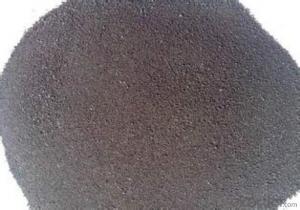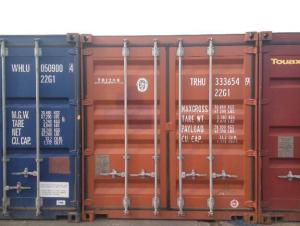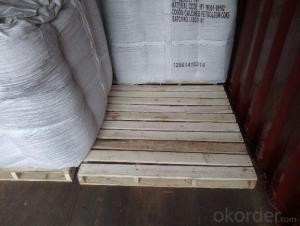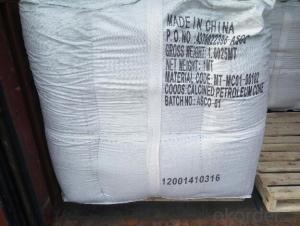Calcined Petroleum Coke as Injection Coke for Foundry Use
- Loading Port:
- Tianjin
- Payment Terms:
- TT OR LC
- Min Order Qty:
- 20.4
- Supply Capability:
- 1014 m.t./month
OKorder Service Pledge
OKorder Financial Service
You Might Also Like
Intrduction
Carbon additive to ningxia production of anthracite as raw material, after washing, crushing, high temperature calcination, filter, etc. Craft refined and become.This is after the anthracite calcination generated high carbon content and low volatile component of the new product, is an ideal raw material to make steel.
Calcined Petroleum Coke comes from delayed coke which extracted from oil refinery. Although Calcined Petroleum Coke contains a little bit higher level of sulfur and nitrogen than pitch coke, the price advantage still makes it widely used during steel-making and founding as a kind of carbon additive/carburant.
Features
In the smelting process for reducing agent. Performance: replace the traditional oil carbon additive, decrease the cost of steelmaking. Features: low ash. low sulfur,low phosphorus, high calorific value. High ratio resistance,high mechanical strength,high chemistry activity. It is mainly used for metallurgy reductant inoculants, casting, refractory materials, machinery, electronics and other fields.Good quality
1) high absorption rate, it can be absorbed up to 90%.
2) absorbed more quickly than other carbon additive; no residue remains in furnace.
3) low Sulfur, the lowest can reach below 0.20%; low nitrogen, normally below 200ppm (0.02%)
Specifications
CPC | |||
F.C.% | 98.5MIN | 98.5MIN | 98MIN |
ASH % | 0.8MAX | 0.8MAX | 1MAX |
V.M.% | 0.7 MAX | 0.7 MAX | 1 MAX |
SULFUR % | 0. 5MAX | 0. 7MAX | 1MAX |
MOISTURE % | 0.5MAX | 0.5MAX | 1MAX |
Pictures
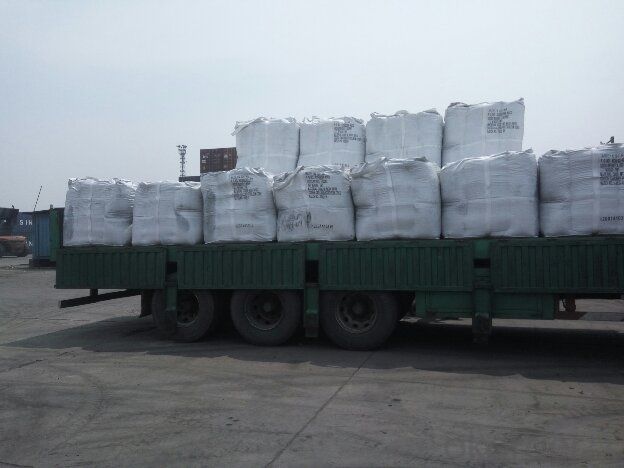
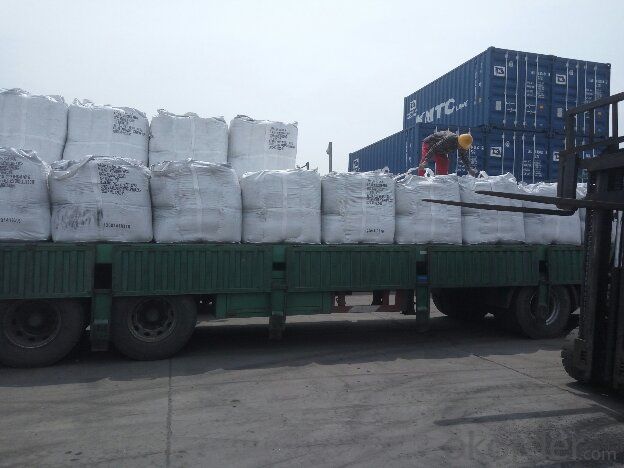
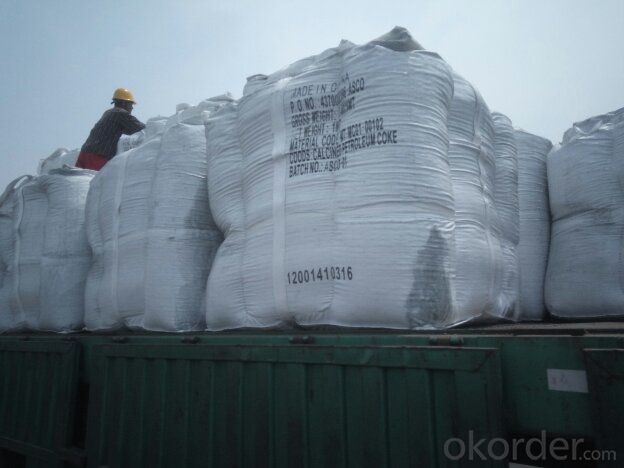
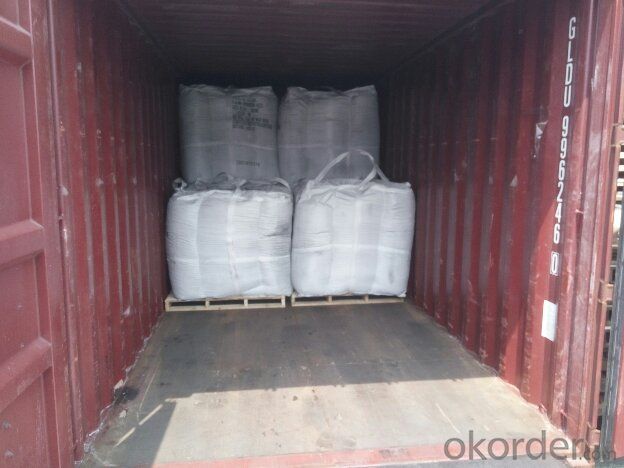
FAQ:
(1)CPC could be as fuel
Petroleum coke is a material relatively low in cost and high in heat value and carbon content with good chemical stability, making it an efficient and costeffective fuel for producing metal, brick and related products.
(2)CPC could be as Graphite Electrodes
Graphite can be produced from lowsulfur needle petroleum coke, which must be heated above 5,432 degrees Fahrenheit.
(3)CPC could be as Anodes
Calcined petroleum coke, often low in sulfur and metallic impurities, is used to make anodes for
the smelting industry.Calcined petroleum coke is mixed with coal tar pitch in the production of
anodes.
- Q: What is carbon Yi virus?
- Not viruses, anthrax bacillus, anthraci (Bacillus) belongs to aerobic bacillus, can cause sheep, cattle, horses and other animals and human anthrax. Anthrax was as lethal agents of imperialism. Herdsmen, farmers, furs and butchers are susceptible to infection at ordinary times. Skin anthrax is sporadic in our country, so we should not relax our vigilance. Biological characters (1) morphological staining: Bacillus anthracis is thick and ends are flat or sunken. Are like bamboo like, no power, no flagella, gram positive bacteria, the in sufficient oxygen, suitable temperature (25 to 30 DEG C) condition to form spores. No spores can be formed in living or dissected bodies. Spore oval, located in the middle of the bacteria, its width is less than the width of bacteria. Capsules can be formed in humans and animals, and in capsules incubated with CO2 and serum, they can also form capsules. The formation of capsules is a toxic feature. Bacillus anthracis is affected by a low concentration of penicillin, and bacteria can be enlarged to form a bead, called "beaded reaction"". This is also a unique reaction of Bacillus anthracis. (two) the culture characteristic of this bacterium is obligate aerobic, and it is easy to breed in common medium. The optimum temperature was 37 DEG C, and the optimum pH was 7.2 ~ 7.4. After 24 hours on agar plate, the rough colony of 2 ~ 4mm Diameter was developed. The colonies were ground glass like, irregular edge, like curly hair, there are one or several small tail processes, this is the expansion of reproduction in 5 caused by bacteria to 10% sheep blood agar plate, no obvious hemolysis ring around the colony, but a long culture can have mild hemolysis.
- Q: How are carbon fibers produced?
- Carbon fibers are produced through a multi-step process known as carbonization. The process starts with a raw material called precursor, which is usually a polymer-based material such as polyacrylonitrile (PAN), rayon, or pitch. The first step involves spinning the precursor material into long, thin fibers. This can be done through various methods such as melt spinning, dry spinning, or wet spinning, depending on the type of precursor used. Once the fibers are formed, they undergo a stabilization process. This involves heating the fibers in the presence of oxygen at a relatively low temperature, usually around 200-300 degrees Celsius. Stabilization helps to remove any volatile components from the fibers and align the molecular structure in a way that enhances its heat resistance and strength. After stabilization, the fibers are subjected to a high-temperature treatment called carbonization. This process takes place in a furnace with little or no oxygen, typically at temperatures above 1000 degrees Celsius. During carbonization, the fibers are heated to a point where most of the non-carbon atoms are expelled, leaving behind a highly pure carbon structure. The final step in the production of carbon fibers is surface treatment. This involves applying a coating or treatment to the fibers to improve their bonding properties and adhesion with other materials. The surface treatment can be done using various methods such as sizing, coating, or plasma treatment. Overall, the production of carbon fibers involves a combination of spinning, stabilization, carbonization, and surface treatment processes to create fibers with exceptional strength, stiffness, and low weight. These properties make carbon fibers highly sought after in various industries, including aerospace, automotive, sports, and construction.
- Q: What are the impacts of carbon emissions on the stability of river ecosystems?
- Carbon emissions have significant impacts on the stability of river ecosystems. One of the primary consequences of carbon emissions is the increase in greenhouse gases in the atmosphere, leading to global warming. Rising temperatures have direct and indirect effects on river ecosystems. Firstly, increased temperatures can alter the physical characteristics of rivers and affect the availability of oxygen in the water. Warmer water holds less dissolved oxygen, which can harm aquatic organisms such as fish and invertebrates that rely on oxygen for survival. This decrease in oxygen levels can lead to reduced biodiversity and even fish kills. Secondly, climate change, driven by carbon emissions, can disrupt the natural hydrological cycle. Changes in precipitation patterns can result in droughts or floods, causing fluctuations in river flow. These changes can affect the spawning and migration patterns of many aquatic species, disrupting their life cycles and reducing their populations. Furthermore, altered river flows can also impact the stability of riverbank and riparian habitats, leading to erosion and habitat loss. Additionally, increased carbon emissions contribute to ocean acidification. When carbon dioxide is absorbed by water, it forms carbonic acid, which lowers the pH of the water. Acidic waters can have detrimental effects on aquatic life, including shellfish, corals, and other calcifying organisms. River ecosystems are interconnected with coastal and marine ecosystems, so the impacts of ocean acidification can indirectly affect river ecosystems through the food web. Moreover, carbon emissions contribute to the deposition of air pollutants, such as nitrogen and sulfur compounds, onto land and water bodies. These pollutants can be transported by rainfall into rivers, leading to increased nutrient levels and eutrophication. Excessive nutrients can cause harmful algal blooms, deplete oxygen levels, and create dead zones, further disrupting the balance of river ecosystems. In conclusion, carbon emissions have profound impacts on the stability of river ecosystems. Rising temperatures, altered hydrological cycles, ocean acidification, and increased nutrient levels all contribute to the degradation of these ecosystems. It is crucial to reduce carbon emissions and implement sustainable practices to mitigate these impacts and preserve the health and stability of river ecosystems.
- Q: What is carbon nanocomposite?
- Carbon nanocomposite refers to a material that is made up of carbon nanoparticles embedded in a matrix material. This combination results in a material that exhibits enhanced mechanical, thermal, and electrical properties, making it suitable for a wide range of applications such as aerospace, electronics, and energy storage.
- Q: How does deforestation contribute to carbon emissions?
- The role of deforestation in contributing to carbon emissions is significant. When forests are cleared or burned, the carbon stored in trees and vegetation is released into the atmosphere as carbon dioxide (CO2), a greenhouse gas that contributes to global warming. Forests act as natural carbon sinks, absorbing CO2 from the atmosphere through photosynthesis. Trees and plants convert CO2 into oxygen and store the carbon in their trunks, branches, leaves, and roots. This process helps regulate the Earth's climate by reducing the concentration of CO2 in the atmosphere. However, deforestation disrupts this natural carbon storage system. The carbon once stored in trees and vegetation is released back into the atmosphere, increasing the concentration of CO2. Burning forests exacerbates this process, releasing even larger amounts of carbon through the combustion of trees and plant material. The loss of forests also leads to a decrease in biodiversity and the destruction of habitats for numerous species, which disrupts the delicate balance of ecosystems. As a result, these ecosystems become less efficient at absorbing and storing carbon, further contributing to increased carbon emissions. Moreover, deforestation indirectly contributes to carbon emissions through various means. For example, when trees are cleared, the exposed soil is exposed to sunlight and heat, causing it to dry and release stored carbon. Additionally, deforestation often leads to the conversion of land for agricultural purposes, such as livestock farming or palm oil plantations, which can increase methane emissions, another potent greenhouse gas. To summarize, deforestation contributes to carbon emissions by releasing stored carbon, disrupting the natural carbon storage system, and indirectly contributing to the release of other greenhouse gases. It is crucial to address deforestation and promote sustainable land management practices to mitigate the effects of climate change and reduce carbon emissions.
- Q: How is carbon used in the production of fertilizers?
- Carbon is used in the production of fertilizers as it serves as an essential component in the synthesis of organic fertilizers. Carbon-based materials, such as compost, manure, and plant residues, are used to create organic fertilizers through a process called decomposition or composting. These organic fertilizers, rich in carbon, provide plants with necessary nutrients and improve soil fertility, ultimately promoting healthy plant growth and productivity.
- Q: The difference between graphite and carbon
- Graphite is a crystalline mineral of carbonaceous elements, and its crystalline framework is hexagonal layered structure
- Q: How does carbon dioxide affect the formation of smog?
- Smog formation is not directly caused by carbon dioxide (CO2). Instead, it is primarily a result of sunlight interacting with other pollutants like nitrogen oxides (NOx) and volatile organic compounds (VOCs). These pollutants are emitted from various sources such as vehicles, industrial processes, and power plants. However, even though carbon dioxide doesn't directly participate in smog formation, it does have a significant impact on climate change. CO2 is a greenhouse gas, which means it traps heat in the Earth's atmosphere and contributes to global warming. As the planet warms, weather patterns can change, leading to more stagnant air conditions that worsen smog formation. Furthermore, the burning of fossil fuels, which releases carbon dioxide, is a major source of air pollutants like NOx and VOCs. So while CO2 itself may not directly cause smog, the activities that release CO2 indirectly contribute to smog formation by releasing other pollutants involved in its creation. Therefore, the influence of carbon dioxide on smog formation is indirect, primarily through its contribution to climate change and the release of other pollutants. By reducing carbon dioxide emissions and transitioning to cleaner energy sources, we can help mitigate climate change and indirectly decrease the factors contributing to smog formation.
- Q: What is carbon dating?
- Carbon dating is a scientific method used to determine the age of ancient artifacts or fossils by measuring the amount of carbon-14 remaining in them.
- Q: What is carbon neutral tourism?
- Carbon neutral tourism refers to a type of tourism that aims to minimize or offset the carbon emissions generated by travel activities. It involves implementing sustainable practices, such as using renewable energy sources, promoting energy efficiency, and supporting carbon offset projects. The goal is to achieve a balance between the amount of carbon emitted and the amount removed from the atmosphere, thus reducing the overall carbon footprint of the tourism industry.
Send your message to us
Calcined Petroleum Coke as Injection Coke for Foundry Use
- Loading Port:
- Tianjin
- Payment Terms:
- TT OR LC
- Min Order Qty:
- 20.4
- Supply Capability:
- 1014 m.t./month
OKorder Service Pledge
OKorder Financial Service
Similar products
Hot products
Hot Searches
Related keywords














